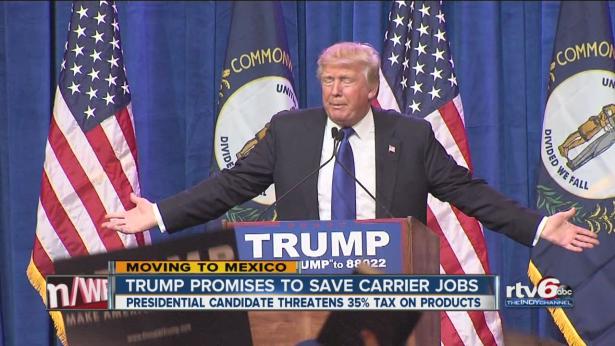In mid-2015, announcing his candidacy for president of the United States, Donald Trump declared that he would “be the greatest jobs president that God ever created.”
Subsequently, the Republican billionaire hammered away at this theme. The nation’s loss of factory jobs, he argued, was the fault of Democrats, but, as he told a Detroit audience, he would “restore manufacturing in the United States.” Addressing a campaign rally in Warren, Mich., he asserted: “If I’m elected . . . you won’t lose one plant, I promise you that.”
Indeed, when it came to job creation, Trump was vastly outperformed by the other presidents. Bill Clinton oversaw the biggest gain, 23 million additional jobs, followed by Ronald Reagan (16 million), Joe Biden (14 million), and Lyndon Johnson (12 million)―all the way down to George W. Bush (1.4 million). During the presidency of Barack Obama, Trump’s much-reviled predecessor, the United States added 11.6 million jobs.
Trump’s defenders point to the disruptive effect the COVID-19 pandemic had on the American economy. Although the disease crisis certainly undermined employment during his presidency, it’s also true that his denial and mismanagement of the public health emergency deepened its human and economic impact in the United States. Furthermore, even before the pandemic hit, job creation during the Trump presidency was relatively weak. During Trump’s first 31 months in office, employment growth in the United States averaged 176,000 jobs per month. During Biden’s first 31 months in office, employment growth averaged 433,000 jobs per month.
Trump, of course, knew how to create jobs, and, during his 2016 presidential campaign, even touted a specific plan for doing that―a $1 trillion federal program to rebuild America’s infrastructure. “We are going to fix our inner cities and rebuild our highways, bridges, tunnels, airports, schools, hospitals,” he declared in a speech on the night of his election. “And we will put millions of our people to work as we rebuild it.”
But Trump had very different priorities and, during his presidency, his infrastructure program never materialized. As a result, federal investments on roads and bridges as a share of the economy remained stagnant, Trump’s promises to upgrade ports and airports went unfulfilled, and federal spending on water infrastructure fell to a 30-year low.
Scrapping its ballyhooed infrastructure plan, the Trump administration instead pushed legislation through Congress in December 2017 that was far more in tune with its real priorities―a $1.9 trillion tax cut favoring corporations and wealthy Americans. “Corporations are literally going wild over this,” Trump chortled. At the same time, adopting the GOP’s trickle-down approach, the administration promoted this legislation (the misnamed “Tax Cuts and Jobs Act”) as a jobs-creating measure. Trump predicted a boom in business investment and claimed that factories are “not going to be abandoned any longer.”
In fact, none of this followed, and, two years later, business investment was declining while mass layoffs continued. Recalling Trump’s false promises about jobs creation, an embittered welder who had supported Trump in 2016 assailed the president’s choice of tax cuts for the rich over infrastructure investments and lamented that he and other members of the building trades had been “snookered” by Trump’s promises to rebuild the country.
In addition, despite all Trump’s talk of creating manufacturing jobs, the nation actually had a net loss of 154,000 of them during his presidency. Nor was this surprising, for between 2016 and 2018―a period before the economic difficulties wrought by the pandemic―nearly 1,800 U.S. factories shut down in the United States.
The policies of the Trump administration played an important role in this decline of U.S. manufacturing capacity and employment. Its tariff wars with other nations added to the problem of U.S. trade deficits that had long undermined U.S. manufacturing. In addition, its tax policies, including provisions in its “Tax Cuts and Jobs Act” of 2017, encouraged the outsourcing of jobs by U.S. corporations.
==


Spread the word